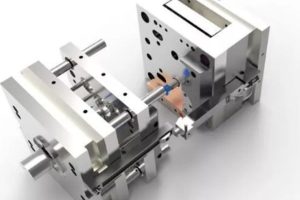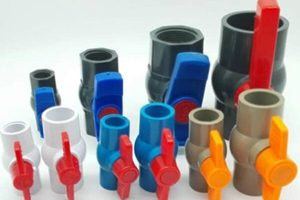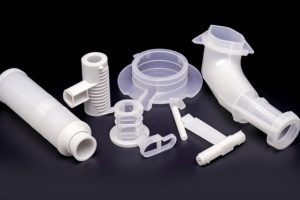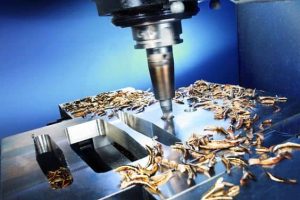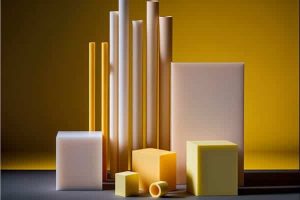Injection molding is a process for making plastic parts by injecting molten plastic into a mold. The clear plastic injection molding process is used to make products that need to be made from translucent plastic.
While this process has many benefits, it is also prone to some common problems. In this blog post, we will explore some of the most common problems and provide tips on how to prevent them.

Common Problems with Clear Plastic Injection Molding
Common problems with the clear plastic injection molding process include warpage, dents, and vacuum voids.
Warpage is caused by uneven cooling of the molten plastic, which causes the part to warp as it cools.
Dents are caused by shrinkage of the molten plastic as it cools and solidifies, resulting in a depressed part surface.
Vacuum voids are the ones formed within the part due to incomplete filling of the mold cavity. Common causes of voids include inadequate injection pressure, poor material flow, and insufficient filler pressure.
To avoid these problems, the material temperature of the molten plastic must be carefully controlled so that the material is evenly distributed throughout the mold cavity. In addition, proper packing pressure must be used to ensure that the molten plastic fills the mold cavity.

Preparation and drying of raw materials
Since any little impurity in the plastic may affect the transparency of the product, and therefore storage, transportation, and filling process must pay attention to sealing, to ensure that the raw materials are clean.
Especially, the raw material contains moisture, which will cause the raw material to deteriorate after heating, so it must be dried.
In injection moulding process, the material must be added using a dry hopper. Another point to note is that during the drying process, the input air should preferably be filtered and dehumidified in order to ensure that it will not contaminate the raw materials. The drying process is as follows, the drying process of transparent plastic.
| Materials | Drying temperature (℃) | Drying time (h) | Thickness of material layer (mm) | Note |
| PMMA | 70~80 | 2~4 | 30~40 | |
| PC | 120~130 | >6 | <30 | Adopt hot air circulation drying |
| PET | 140~180 | 3~4 | Using continuous drying and feeding device is better |
Barrel, screw, and accessories clean
To prevent raw material contamination and in the screw and accessories depression there are old material or impurities, especially poor thermal stability of the resin present, so before use, after the shutdown should be screw cleaning agent to clean the parts so that it shall not stick to impurities, when there is no screw cleaning agent, available PE, PS, and other resins to clean the screw.
When the temporary stop, to prevent raw materials in the high temperature for a long time, causing the solution to fall, the dryer and barrel temperature should be reduced, such as PC, PMMA and other barrel temperatures should be reduced to 160 ℃ or less (hopper temperature for PC should be reduced to 100 ℃ or less).

Issues to be noted in mold design and product design
To prevent poor return melt flow, or uneven cooling resulting in poor plastic moulding production, mold surface defects, and deterioration, the following points should generally be noted in the mold design.
a) The wall thickness should be as uniform as possible and the release slope should be large enough.
b) The transition part should be rounded and smooth, and gradually transitioned to prevent sharp corners and sharp edges from arising, especially in PC products that must not have gaps.
c) The gate and runner should be as wide and short as possible, the location of the gate should be set according to the shrinkage condensation process, and the cold material well should be added if necessary.
d) The surface of the mold should be bright and clean with low roughness (preferably below 0.8).
e) Ventilation holes: the slot must be sufficient to vent the air and the gas in the melt in time.
f) Except for PET, the wall thickness should not be too thin, generally not less than 1mm.

To reduce internal stress and surface quality defects, the following aspects should be noted in the injection molding process
A special screw
An injection molding machine with a special screw and a separate temperature control nozzle should be selected.
Injection temperature
Injection temperature is appropriate for higher injection humidity on the premise that the plastic resin does not decompose.
Injection pressure
Generally higher to overcome the molding defects of high melt viscosity, but the excessive injection pressure is too high will produce internal stress caused by difficult release and deformation.
Injection speed
In the case of meeting the mold filling, it is generally desirable to be low, and it is best to use slow a fast a slow multi-stage injection.
Pressure-holding time and molding cycle
In the case of meeting the product filling and not producing depressions and bubbles, it is advisable to keep it as short as possible to minimize the residence time of the melt in the barrel.
Screw speed and back pressure
Under the premise of meeting the quality of plasticization, should be as low as possible, to prevent the possibility of decompression.
Mold temperature
The cooling of the product is good or bad, the quality of the impact is great, so the melt temperature must be able to accurately control its injection process, if possible, the mold temperature should be the higher good.
Other aspects
As to prevent the quality of the upper surface from deteriorating, generally injection molding with as little mold release agent as possible; when using reused plastic material should not be more than 20%.
For products other than PET, the products should be post-treated to eliminate internal stress, PMMA should be dried in a 70-80t hot air cycle for 4 hours; PC should be heated in clean air, glycerin, liquid paraffin, etc. 110-135℃.
The time depends on the product, the highest need more than 10 hours. And PET must go through the process of bi-directional stretching to get good mechanical properties.

Summary
Because of the high light transmission rate of transparent plastics, it is inevitable that the surface quality of plastic products must be strict and cannot have any defects such as mottling, porosity, whitening, haze, black spots, discoloration, poor surface gloss, etc.
Therefore, the entire injection molding production process should pay great attention to and put forward strict and even special requirements for raw materials, equipments, molds, and even product design.
Secondly, since transparent plastic is mostly high melting point and poor liquidity, to ensure the surface quality of the product, it often needs higher temperature, injection pressure, injection speed, and other process parameters should also be finely adjusted so that the injection plastic can be filled with mold, and will not produce internal stress and cause product deformation and cracking.
Therefore, from the preparation of raw plastic materials, equipment, and mold requirements, the injection molding process and product processing of raw materials in several aspects are to be strictly operated.

